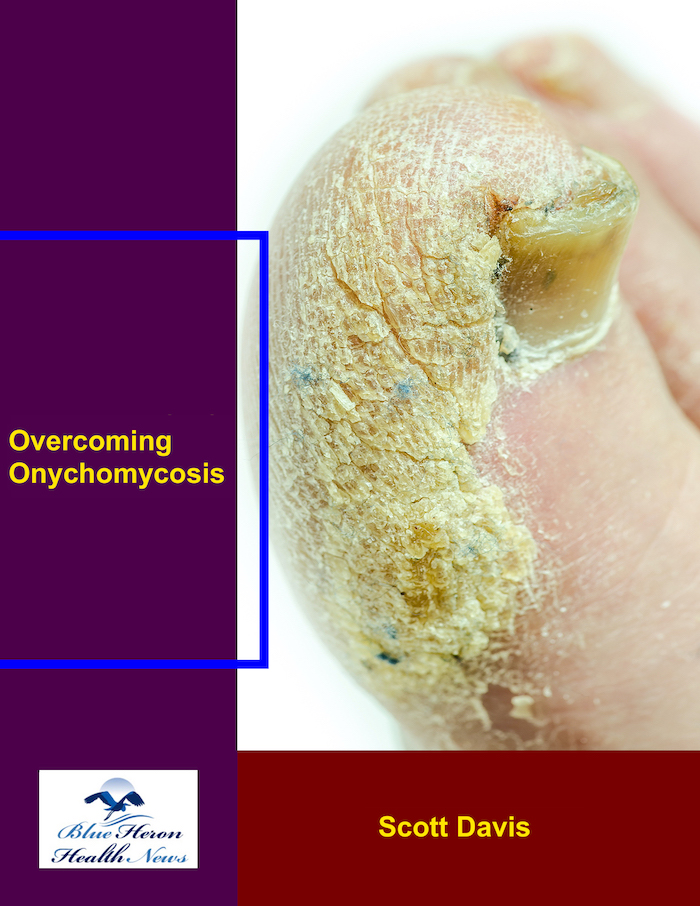
Overcoming Onychomycosis™ By Scott Davis If you want a natural and proven solution for onychomycosis, you should not look beyond Overcoming Onychomycosis. It is easy to follow and safe as well. You will not have to take drugs and chemicals. Yes, you will have to choose healthy foods to treat your nail fungus. You can notice the difference within a few days. Gradually, your nails will look and feel different. Also, you will not experience the same condition again!
What are the risk factors for developing onychomycosis?
Several risk factors can increase the likelihood of developing onychomycosis, a fungal infection of the nails. These factors are related to environmental exposure, personal habits, health conditions, and age. Here are the primary risk factors for onychomycosis:
1. Age
- Older Age: Onychomycosis is more common in older adults due to reduced blood circulation, slower nail growth, and increased exposure to fungi over time. The risk increases after age 60.
2. Health Conditions
- Diabetes: People with diabetes are more susceptible to fungal infections, including onychomycosis, due to compromised immune function and reduced blood flow to the extremities.
- Immunocompromised States: Conditions such as HIV/AIDS, cancer treatments, and the use of immunosuppressive drugs (e.g., corticosteroids, chemotherapy) weaken the immune system and increase the risk of fungal infections.
- Peripheral Vascular Disease: Poor circulation in the legs and feet can make it easier for fungal infections to develop and harder for the body to fight them off.
- Psoriasis: People with psoriasis are at higher risk for onychomycosis, possibly due to skin damage and changes in the nail structure that make it easier for fungi to penetrate.
3. Nail Trauma
- Repeated Trauma or Injury to Nails: Injuries to the nails, such as those caused by stubbing a toe, wearing tight shoes, or repetitive physical activity, can make nails more vulnerable to fungal infections by breaking the nail’s protective barrier.
4. Moisture and Warm Environments
- Prolonged Moisture Exposure: Fungi thrive in moist, warm environments. People who frequently have wet feet or hands, such as swimmers, athletes, and people whose jobs involve working in damp environments, are at higher risk.
- Sweaty Feet (Hyperhidrosis): Excessive sweating, particularly in the feet, creates an ideal environment for fungal growth, increasing the likelihood of onychomycosis.
5. Footwear and Hygiene
- Tight or Non-Breathable Shoes: Wearing shoes that do not allow airflow (such as synthetic or non-breathable materials) creates a warm, damp environment conducive to fungal growth.
- Poor Foot Hygiene: Failure to keep feet clean and dry, or to regularly change socks and shoes, increases the risk of fungal infections.
- Walking Barefoot in Public Areas: Walking barefoot in communal areas like locker rooms, swimming pools, and public showers exposes individuals to fungal spores, increasing the risk of infection.
6. Family History and Genetic Predisposition
- Family History: A family history of onychomycosis may increase the risk, potentially due to shared environments and genetic predisposition to fungal infections.
- Genetic Factors: Some individuals may be genetically predisposed to weaker immune responses or conditions like hyperhidrosis, which increase susceptibility to fungal infections.
7. Gender
- Male Gender: Onychomycosis is more common in men than in women. Men are often more exposed to environments that foster fungal growth, such as communal showers, and may be less likely to seek early treatment.
8. Athletic Participation
- Athletes: Participation in sports, particularly those involving swimming, running, or other activities that increase exposure to moist environments or cause trauma to the nails, increases the risk of developing onychomycosis.
9. Previous Fungal Infections
- History of Athlete’s Foot (Tinea Pedis): Individuals who have had athlete’s foot are at greater risk for developing onychomycosis, as the same fungi that cause athlete’s foot can also infect the nails.
10. Smoking
- Smoking: Smoking has been associated with an increased risk of onychomycosis, possibly due to impaired circulation and immune response in the extremities.
Summary:
Risk factors for developing onychomycosis include older age, diabetes, immunocompromised states, nail trauma, prolonged exposure to moisture, poor hygiene, genetic predisposition, male gender, athletic participation, a history of fungal infections, and smoking. Taking preventive measures such as keeping nails clean and dry, avoiding injury, and wearing breathable footwear can help reduce the risk of infection.
Overcoming Onychomycosis™ By Scott Davis If you want a natural and proven solution for onychomycosis, you should not look beyond Overcoming Onychomycosis. It is easy to follow and safe as well. You will not have to take drugs and chemicals. Yes, you will have to choose healthy foods to treat your nail fungus. You can notice the difference within a few days. Gradually, your nails will look and feel different. Also, you will not experience the same condition again!